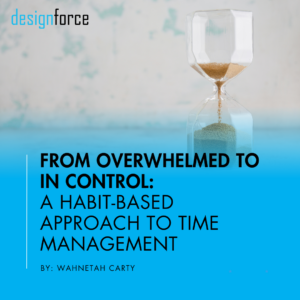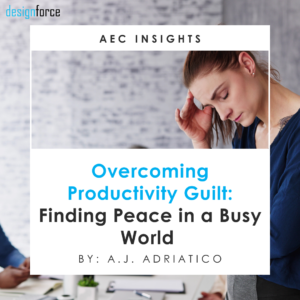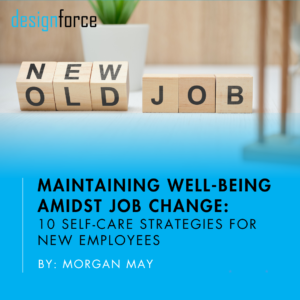When it comes to evaluating our professional lives and career trajectories, these thoughts can be overwhelming. I still remember the days when I wandered aimlessly through life, not knowing what I should be doing or where I should be going with my career. All I knew was that I wanted to be in a position where I would spend my days dedicated to serving others. That didn’t quite narrow down my focus nor did it help me establish a framework for road mapping my professional journey. I had all these ideas about what I wanted my ideal career to look like, but I never put those thoughts on paper. They just circulated in my brain as I applied for dozens and dozens of jobs, throwing my resume out and about, hoping something would stick.
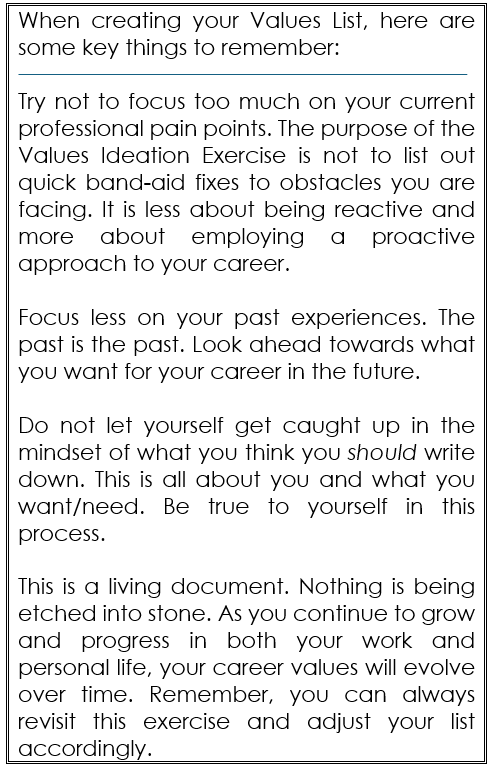
Then, something magical happened. I discovered DesignForce. Or rather, they discovered me. During my candidacy for my current position, I was asked to complete a fun little activity called the Values Ideation Exercise, or Values List. When my interviewer (now colleague) first described this exercise to me, I immediately thought “This is the coolest thing I have ever been asked to do in a hiring process. This is 100% my jam!” I couldn’t wait to sit down and get to work on it.
What exactly is a Values List? In summary, it is essentially a list of standards and traits that one aims to incorporate into one’s daily professional life. It’s more than just a wish list of what one hopes to find in a job. Just as an employer has a list of required and preferred qualifications for candidates, think of the Values List as your own criteria of qualifications for assessing employers. As I often remind the career professionals that I work with, you are vetting employers just as much as they are vetting you. It’s important to have your own evaluation methods and tools so that you can make well-informed decisions about your career.
The Values List isn’t just for career professionals who are actively seeking opportunities though. This tool can also be used to help gainfully employed professionals examine where they currently are in their careers. How does one’s current employer measure up to the values and expectations of the career professional? Is there a strong alignment between the employer and employee? If not, then what needs to change?
If you complete this exercise and find areas of misalignment between your employer and you, that does not automatically mean you should pack your bags and run for the hills. On the contrary, this opens an opportunity for you to initiate conversations with your employer to discuss the issues that matter to you. Now, if you truly feel that you have exhausted your options and solutions, then maybe looking for a new opportunity could be the best next step for you. If this is the case, you now have a handy little rubric, aka the Values List, to help guide you in your career search process.
Okay so, you’ve completed your Values List… Now what? Well, that’s where DesignForce comes in. As experts in career consulting, our job is to guide you on the path to where you want to take your career. The benefit of the Values List is that it helps me, and my team, develop a more comprehensive understanding of who you are and what matters most to you. This ensures that our team is able to uphold our mission of putting people first by executing our search and consultation efforts with the highest level of intentionality.
I often tell the folks that I work with that they are in the driver’s seat and I’m just the navigator, You tell me where you want to go, and I’ll help show you the routes to get there. So, what do you say? Are you ready to embark on an exciting new career journey? Reach out to DesignForce to learn more about how we can support you in your professional endeavors.
Unsure how to get started on writing your Values List? Download our Values Ideation Exercise worksheet to help you organize your ideas.
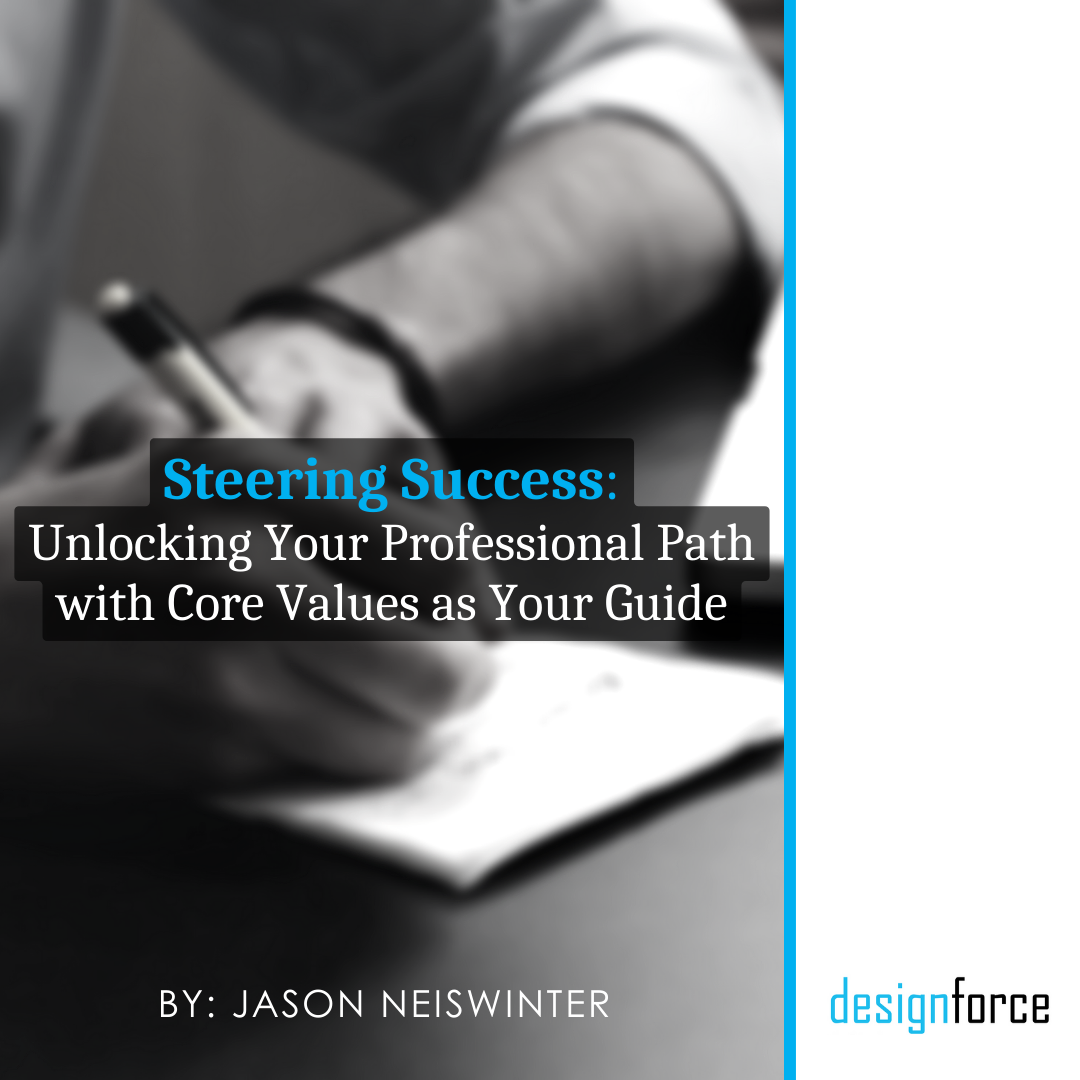
Related Posts
Let's learn together.
Stay inspired and in the know on all things A|E|C.
Sign up for our monthly newsletter.


